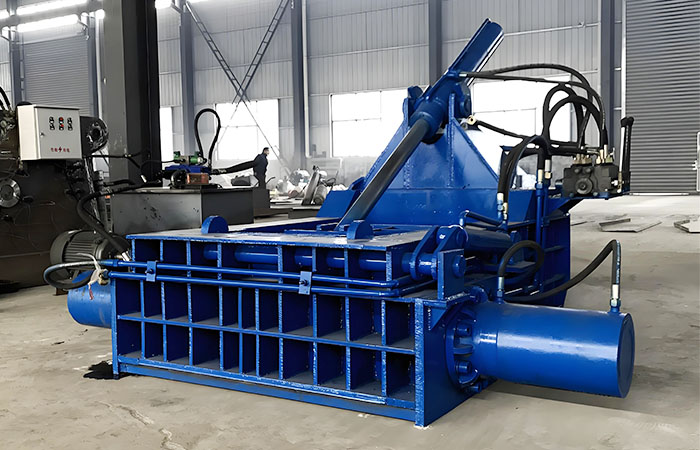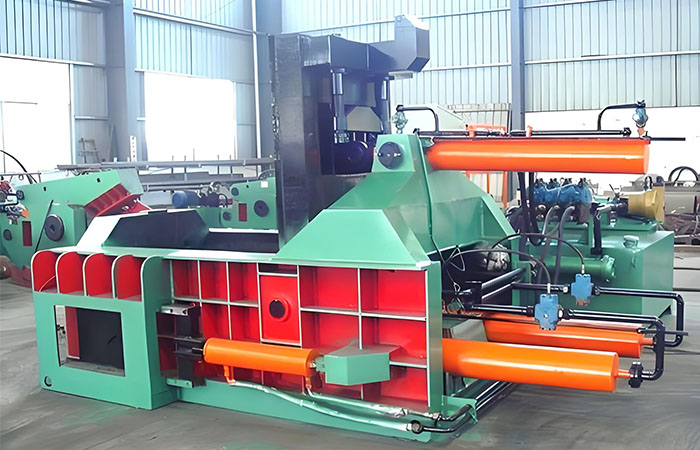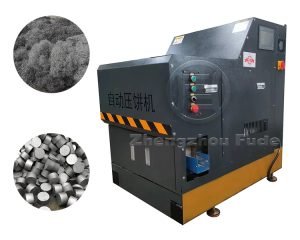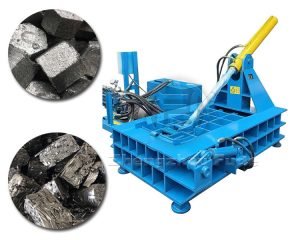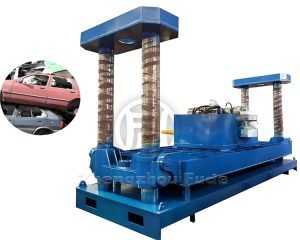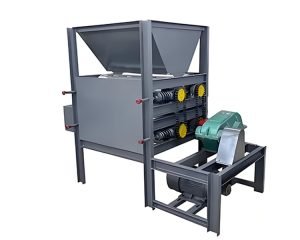Metal compactor is a device that directly forms various metal waste materials through cold pressing under high pressure. Its working principle mainly relies on the synergistic effect of hydraulic system, compression chamber, and mold. The following is the detailed process of the block press operation:
System composition
The metal compactor is mainly composed of three parts: hydraulic system, compression chamber, and mold. The hydraulic system is the power source of the block press, responsible for providing the pressure required for compression; The compression chamber is the main working area of the compactor, consisting of two molds on top and bottom, with a gap in the middle to accommodate the metal waste to be compressed; Molds are used to compress metal waste into regular blocks.
Working process of block press
- Start the hydraulic system: When the metal press starts working, start the hydraulic system first. The hydraulic system pressurizes the oil through an oil pump and delivers it to the compression chamber.
- Mold closure: As the oil enters the compression chamber, the upper mold moves downward under hydraulic pressure and closes with the lower mold. At this point, the metal waste to be compressed is placed between the upper and lower molds.
- Compression process: After the mold is closed, the hydraulic system continues to apply pressure, compressing the metal waste into blocks. During this process, the pores inside the metal waste are compressed and compacted, resulting in a smaller volume and the formation of a relatively dense whole.
- Mold separation and material retrieval: Once the compression process is completed, the upper mold will move upward and separate from the lower mold. At this point, the compressed metal block will remain in the lower mold and can be manually or mechanically removed.
- Cleaning and preparation for the next compression: After removing the metal block, the waste metal material in the compression chamber will be cleaned up for the next compression process.
Technical features
- Hydraulic transmission technology: The metal press adopts hydraulic transmission technology, which has the advantages of smooth operation, adjustable pressure, and high efficiency.
- Wear resistant oil seal: The equipment adopts wear-resistant oil seals to ensure that the hydraulic system does not leak oil or reduce pressure during long-term operation.
- High degree of automation: Modern metal briquetting machines are mostly controlled by computers, with high degree of automation, low failure rate, and easy maintenance.
- Strong adaptability: The metal compactor can process various metal waste materials, including metal shavings, powdered metal powder, smelting additives, sponge iron, etc., and has a wide range of applicability.
Application Fields
Metal briquetting machines play an important role in fields such as scrap metal recycling, metallurgical industry, and casting industry. Through compression processing, metal waste not only reduces its volume, facilitates storage and transportation, but also enhances its reuse value.
Zhengzhou Fude Machinery integrates research and development, manufacturing, and sales. We have a professional technical team that deeply understands customer needs, recommends and answers equipment questions for customers, teaches operation techniques, and produces metal compactors, shredders, copper rice machines, plastic crushers, cake presses, and more. If you want to learn about the metal processing, recycling and reuse industry, please consult us.
 Fudemetal Crusher
Fudemetal Crusher